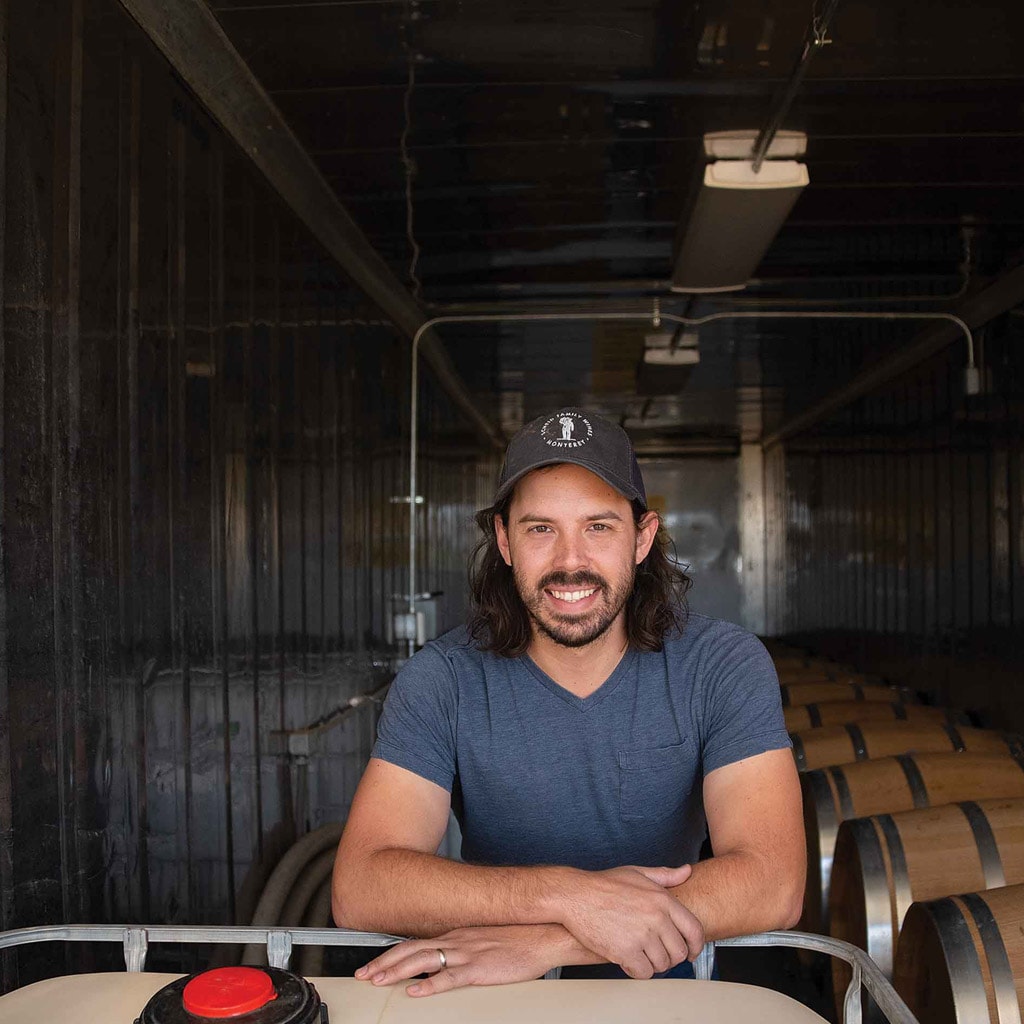Agriculture, Specialty/Niche June 01, 2022
Wild Idea
.
Native yeasts are the ultimate expression of terroir.
Riverview Vineyard is a special place: 338 acres overlooking a bend in the Salinas River that is likely the scene John Steinbeck described in the opening pages of Of Mice and Men. Wine lovers talk about the effect of place on wine—the way a particular vineyard’s soil, latitude, elevation, climate, and sun exposure shape the character of the grapes that grow there—and call it terroir.
Winemaker Casey Di Cesare and the team at Scheid Family Wines in Greenfield, California, have taken terroir a step further. They rely on native yeasts and bacteria from the vineyard to ferment the wine for their Metz Road label, rather than adding commercial yeast to do the job.
“The whole idea of Metz Road is really capturing a sense of place,” Di Cesare says. “It’s not just the soil, it’s not just the wind, it’s not just the location—it’s ‘what actually grows here?’ We really wanted to capture that in our Chardonnay and Pinot Noir.”
To understand how radical that approach is, you have to appreciate the fact that winemakers are clean freaks—and control freaks. They outsource the production of alcohol to trillions of yeast cells every year, but they carefully choose the species (usually Saccharomyces cerevisiae) and even specific strains optimized for particular varietals or flavor profiles.
Like the famous brewing monks of Belgium who ferment their ales in open vats, Di Cesare embraces the wild fermenters and lets God sort it out.
At first, it put the terror in terroir.
“Understanding yeast and wanting to have a certain level of control of fermentation, obviously the first time we did it, it was a little scary,” Di Cesare confesses. “Now that we’re on our fifth vintage, it’s part of the program and we’ve gotten very comfortable.”
One of the early lessons was realizing the need to isolate Metz Road’s fermentation vats from Scheid Family Wines’ production with commercial yeast. S. cerevisiae is so effective that it quickly out-competes wild strains, so Di Cesare’s team built a tiny winery in a shipping container in a corner of Riverview Vineyard.
That allows a surprisingly broad range of yeasts to operate.
“We test at the beginning, middle, and end of every fermentation,” Di Cesare says. “You’d expect one Saccharomyces would end up dominating the population, but what we’re seeing is in the middle of fermentation we’ve got 12 or 16 different yeasts chewing away, and at the end, we’ve got 3 to 8 yeasts still working. We’ve gotten Pichia, we’ll get Torulaspora, we’ve gotten Haseniaspora, and all these can contribute certain complexities.”
Above. Casey Di Cesare, winemaker for Scheid Family Wines' Metz Road label, uses wild yeasts to capture not just the climactic aspects of terroir, but the microbiology of it, too. These Pinot Noir grapes travel just a few feet from vine to crush. Di Cesare checks the press at Metz Road’s tiny, bonded winery, housed in a shipping container. The Metz Road label is a boutique offering in the Scheid Family Wines portfolio. Yeasts meet grapes on the vine.
Happy yeasts. “We do everything in our power to make sure those yeasts are happy and getting us to dryness,” Di Cesare says, describing a complete fermentation of sugars into alcohol. “Sometimes fermentations will take two weeks. Sometimes they will take three months. But we’ll be patient with it. And we’re always testing and tasting, making sure things aren’t going awry. And so far it’s been successful.”
The Metz Road team’s patience is rewarded with tropical-tinged Chardonnays and lush, complex Pinot, wines with extra minerality and mouthfeel provided by the wild yeasts. Enologists have begun studying how non-Sacchacromyces yeasts can be used to increase the rich, creamy feel of wine through the polysaccharides, mannoproteins, and glycerol they produce during fermentation. Native yeasts can also unlock flavor and aroma agents that Saccharomyces might not ordinarily reveal, adding unique dimensions to wines.
“I was talking to a winemaker once and liked the way he described it, where commercial yeast was like vanilla or chocolate ice cream, and when you’re looking at a native yeast fermentation, you’re looking at Ben & Jerry’s Cherry Garcia,” Di Cesare says. “Maybe one’s not better than the other, but they’re different in their complexities.”
Clean fruit. Every winemaker likes to say that great wine starts in the vineyard, but Di Cesare really puts that to the test.
“It starts in the vineyard, it starts with really clean fruit and clear communication from the vineyard team to the winemaking team,” he points out.
The Scheid farming team hasn’t applied fungicides at Riverview Vineyard for three years, a move that requires careful monitoring of the vineyard but also encourages rich microbial biodiversity on the grapes. Then they hand over the fruit—and the wild yeasts—to the winemakers.
Jennifer Evans, marketing director for Scheid Family Wines, notes that Metz Road represents about 3,100 cases in the company’s 700,000-case business. Priced in the $30-per-bottle range, it’s finely targeted.
“It’s definitely more of a high-end, on-premise, bistro-type wine, certainly for those people who know a bit more about wines and enjoy the nuance,” she says.
What they get is pure terroir—the micro and macro aspects of Riverview Vineyard in every bottle.
Di Cesare sums it up this way: “Whatever this vineyard gives is what we want to produce.” ‡
Read More

AGRICULTURE, SPECIALTY/NICHE
Magic Beans
Vanilla grower nurtures a flavor of the tropics.

AGRICULTURE, SUSTAINABILITY
Dream Big
Ambitious easement program grows to landscape scale.






